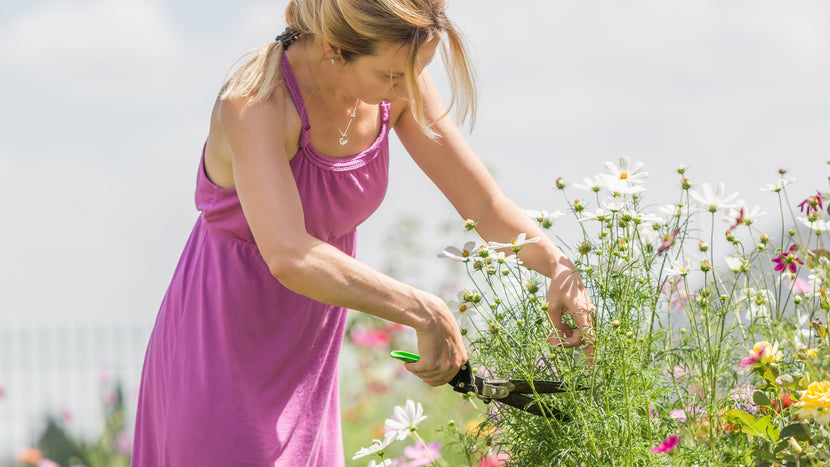
The Importance of Deadheading Flowers in Your Landscape
Deadheading, the practice of removing spent flowers from plants, is an essential gardening technique that significantly enhances your landscape's beauty, health, and longevity. Whether you're a novice gardener or an experienced horticulturist, understanding the importance of deadheading can transform your garden into a vibrant and flourishing haven.

Seven reasons to Deadhead in the Garden
There are a multitude of benefits you can redeem through the simple act of deadheading in your garden! Below are just a few of the many benefits.
1. Encourages Continuous Blooming

One of the primary benefits of deadheading is that it encourages continuous blooming. Many flowering plants, such as petunias, marigolds, and roses, naturally produce more flowers when their spent blooms are removed. Cutting off the faded flowers signals the plant to produce more buds, leading to an extended blooming period and a more colorful garden. This is particularly important for annuals and perennials that bloom throughout the growing season.
2. Enhances Plant Health
Removing dead or dying flowers can also improve the overall health of your plants. Spent blooms can harbor diseases and pests, which may spread to healthy parts of the plant. By deadheading regularly, you reduce the risk of these problems, ensuring your plants remain robust and vibrant. Moreover, it prevents the plant from expending energy on seed production, redirecting it towards growth and flowering.
3. Improves Aesthetic Appeal
Deadheading significantly enhances the visual appeal of your garden. Faded flowers can make a garden look untidy and neglected. Removing these spent blooms keeps your garden fresh, neat, and well-maintained. This simple practice can make a substantial difference in the overall aesthetic of your landscape, creating a more inviting and attractive outdoor space.
4. Promotes More Compact Growth
For certain plants, deadheading can promote more compact and bushier growth. When the terminal buds are removed, it encourages lateral growth, leading to a fuller and more attractive plant. This especially benefits plants like geraniums and zinnias, which can become leggy if not properly maintained.
5. Prevents Self-Seeding
While some gardeners appreciate the natural look of self-seeding plants, others see it as a nuisance if not controlled. Deadheading prevents plants from setting seeds and spreading uncontrollably. This is particularly important for aggressive species that can quickly overrun your garden. By managing seed production, you can maintain a balanced and well-organized landscape.
6. Encourages Re-Blooming in Perennials
Many perennials, such as coneflowers, salvia, and daylilies, benefit from deadheading as it encourages re-blooming. While these plants have a primary blooming period, deadheading can stimulate them to produce a second flush of flowers later in the season. This extends the enjoyment of your garden's floral display and ensures continuous interest throughout the growing season.
7. Easy and Rewarding Gardening Practice
Deadheading is a simple and rewarding gardening practice that doesn’t require special tools or expertise. All you need is a pair of sharp scissors or pruners and some time. The immediate visual improvement and the long-term benefits make it a highly gratifying task for gardeners of all skill levels.

Tips for Effective Deadheading
- Know Your Plants: Different plants have different deadheading requirements. For instance, with roses, you should cut back to a five-leaflet leaf, while with plants like petunias, you can simply pinch off the faded flowers.
- Regular Maintenance: Deadheading should be a regular part of your gardening routine. Check your plants weekly to ensure they are up to the task.
- Use Clean Tools: Ensure your pruning tools are clean and sharp to avoid damaging the plants and spreading diseases.
Conclusion
Incorporating deadheading into your gardening routine is a simple yet powerful way to enhance your landscape's beauty, health, and productivity. This practice not only promotes continuous blooming and compact growth but also keeps your garden tidy and free from disease.
Whether you're looking to maintain a neat garden or encourage more flowers, deadheading is an essential technique that brings numerous benefits to your green space. Embrace this practice and enjoy a thriving, colorful garden all season long.
By understanding and implementing the importance of deadheading, you can take your gardening skills to the next level, ensuring a lush and vibrant landscape that will be the envy of your neighborhood. Happy gardening!
